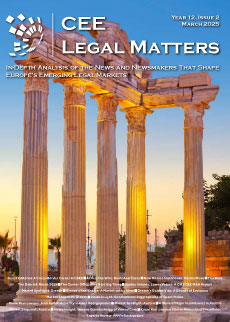The Government of the Republic of Serbia, at its session held on 4 May 2023, adopted the Draft Amendments to the Planning and Construction Act, so that, in due course, the adoption of the Draft and the adoption of the amendments to the Planning and Construction Act can be expected.
The main objectives of the amendments to the Planning and Construction Act are, according to the explanations of the Government of the Republic of Serbia, to simplify the procedure for the issuance of building permits, to introduce new elements of the “green agenda”, to increase the responsibility of the public in the procedures for the issuance of building documentation, and to abolish the conversion of the cost of construction for a certain category of public, the establishment of a lex specialis for linear infrastructure facilities, the incorporation of the Agency for Spatial Planning and Urban Planning of the Republic of Serbia, the extension of the entities competent for the issuance of the information on location, the introduction of a chief state urban planner, the increased protection of natural and cultural areas and the increase activity of local authorities in the field of planning and spatial planning.
The proposed changes and amendments to the Planning and Construction Act set a trend of over-regulation of the provisions in the field of construction, further complicating the procedures to be carried out in the most straightforward transactions, ignoring the rights of the beneficiaries and placing certain entities in an unfavourable position.
On the other hand, the very concept and result the implementation of amendments and additions should achieve is economically and socially justified, but the answer to whether the means have achieved the goal will not be known in the near future. The most significant changes to the Law on Planning and Construction are proposed in the part related to conversion, i.e., the transformation of the right to use construction land into ownership rights without compensation.
The aim of these amendments is to eliminate the obligation to pay compensation for conversion for certain individuals who, according to the existing legal framework, are required to pay it, and to allow them to convert the right to use into ownership rights without compensation. The proposal for amendments and additions excludes entities that were or are business entities privatized under laws regulating privatization, bankruptcy, and enforcement procedures, as well as their legal successors in terms of status, i.e., individuals who have acquired the right to use by purchasing facilities from privatized entities, from the obligation to pay compensation for conversion.
The amendments to the Law on Planning and Construction stipulate that the right to use for these individuals ceases and is converted into ownership rights without compensation, but regardless of this, a separate procedure must be conducted for the conversion of the right to use into ownership rights to be realized.
The holder of the right to use, intending to convert this right into ownership rights, shall have to submit a request to the Republic of Serbia Agency for Spatial Planning and Urbanism for issuance of information on location with a confirmation determining both the purpose of the respective cadastral plot(s) and the possibility of registering ownership rights without compensation in favor of the applicant. If the construction of public-purpose facilities is planned on the cadastral plot(s), in entirety or in part, the conversion will not possible, or it would be possible with prior preparation and approval of a parcellation project for the purpose of dividing the plot(s).
Such procedural solution is inadequate for several reasons.
Firstly, the process lacks control over the applicant’s identity and the fulfillment of subjective conditions for conversion without compensation. In short, the agency issuing information on location with confirmation on subjective legitimation is neither authorized nor equipped to assess whether the applicant is truly eligible for conversion without compensation or if they may be an entity that is obligated to pay the consideration (such as a social enterprise or cooperative).
Secondly, according to the law itself, the Agency for Spatial Planning and Urbanism is not the entity authorized to issue location information. This authority may only exceptionally be granted with such competence, upon fulfillment of the conditions that will be prescribed by a bylaw.
Thirdly, the fate of the right to use in cases where the plot partially designated for a public purpose is not clearly defined, particularly if the remaining portion of the parcel, after allocating land for public use, does not meet the legally prescribed conditions for a construction plot in terms of minimum area, access to public roads, and similar requirements.
The amendments to the law, therefore, only take into account the public interest and do not provide a means to address marginal cases or conduct more rigorous checks on the fulfillment of conditions for conversion without compensation.
In addition to unclear and inconsistent procedural solutions, the question of conversion without compensation for individuals who have been obligated to pay the consideration since 2009 has raised other issues, particularly the issue of a disadvantageous position for individuals who have already paid compensation for conversion and the relationship between conversion and restitution rights.
Conversion with compensation has been the only way for certain individuals to acquire the right to construct on construction land where they were registered as right holders. Despite laws allowing for certain “transitional periods” during which right holders could obtain construction permits based on their right to use, right holders have been compelled for a significant period to convert their right to use into ownership rights and pay compensation to be able to exercise the construction rights they held prior to 2009.
By introducing conversion without compensation for individuals with the same status, those who have already paid compensation are placed in a disadvantageous position, raising questions about the compatibility of the amendments to the Law on Planning and Construction with regulations on state aid.
The explanation for the law failed to justify the amendments from the perspective of the Law on State Aid, which should be assessed by the Commission for State Aid Control prior to adopting the amendments. The issue of conflict between the right to conversion and the right to restitution was fully resolved by the provisions of the Law on Restitution of Confiscated Property and Compensation, and the legal framework unambiguously gave priority to the right to conversion over the right to restitution for privatized individuals.
However, through the provisions of the subsequently enacted Law on the Conversion of the Right to Use Construction Land with Compensation, the realization of the right to conversion was conditioned on the absence of a restitution claim that could result in in-kind restitution. In this way, the question of conflict between the right to conversion and the right to restitution remained unresolved, likely taking into account the nature of restitution as a process aimed at rectifying decades-long injustices.
In practice, the condition of the absence of restitution claims as a requirement for conversion did not cause significant problems and did not greatly hinder conversions. However, the legal solution of the absence of restitution claims as a condition for conversion provided some hope to restitution claimants that they could realize their rights to in-kind restitution and that there was some control over conversions from the perspective of restitution.
With the amendments to the Law on Planning and Construction, not only will there be a lack of systematic control over the process from the perspective of restitution, but the fund of financial resources intended for compensation in the restitution process will also be reduced. Namely, according to existing laws, a portion of the conversion fees was intended to fulfill the obligations of the Republic of Serbia in terms of compensation-based restitution.
In any case, despite the fact that the amendments to the Law on Planning and Construction have focused on details and minutiae, a comprehensive solution to this issue is still lacking. The proposed amendment expanding the circle of individuals entitled to conversion certainly aims to support the growth of the construction industry in the Republic of Serbia, but the conversion process, the lack of alignment with other regulations, and the unclear procedure may delay the intended effect.
The proposed amendments continue the trend of overregulation, aiming to provide detailed clarification of certain institutions and the assessment of facts in individual proceedings. As a result, the Law on Planning and Construction is becoming increasingly comprehensive and detailed with the aim of increasing certainty and legal security.
However, on the other hand, it is becoming more complicated to apply in cases where life situations cannot be fully categorized under the law, often leading to negative individual decisions. Despite the fast and easy access to information through modern technologies, laws should primarily strive for fairness and enable effective application even in situations that cannot be fully categorized under specific legal norms.
Therefore, it is necessary to aim for simplification of laws and addressing details and specifics through sublegal acts and individual decisions in the future, particularly in the field of construction regulations.
By Ivan Petrovic, Partner, JPM Jankovic Popovic Mitic

















